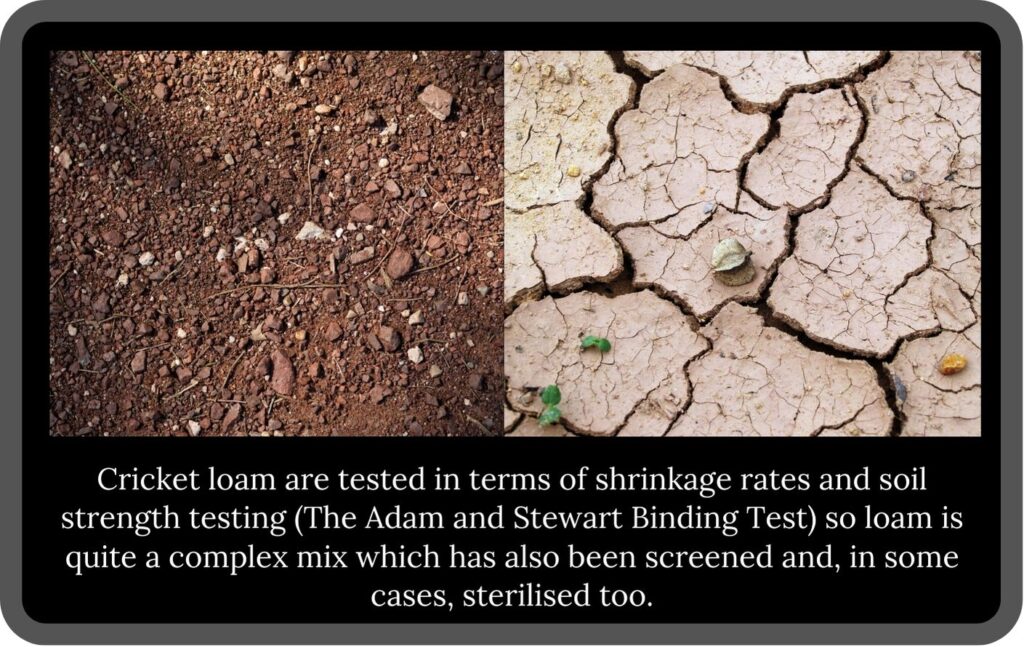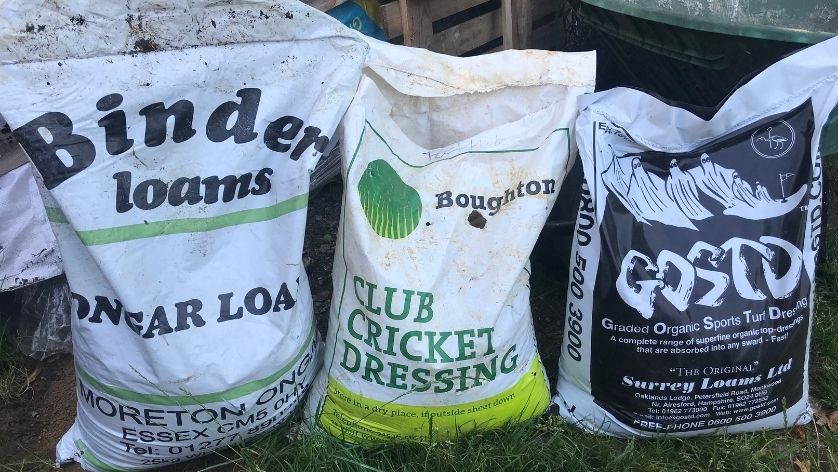It’s no secret that preparing a cricket wicket can be classed as an art. A lot of knowledge and skill goes into preparing a top grade wicket, as anyone who has attempted it will know. Before you can even start any work, the most important part is ensuring you have suitable loam or clay. What is considered suitable can vary region to region greatly, depending on the climate. An example would be Australia using a much higher percentage of clay, whereas in the UK, we’re more likely to use a mixture of clay, sand and silt, which often surprises some! Years ago, l remember being told to never put lawn sand on a cricket square, but now we are aware a loam has a good percentage of sand within. A great example of this would be Ongar loam, which has over 30% sand content, with the rest being made up of clay and silt. The balance of the three size classes all play their part in the binding process of loam and are all key in the inter-packing of particles that, when prepared well, create a hard surface, such that the ball will not deform the surface on impact.

Again, this may be diffrent in tropical climates due to the ability of the clay to hold moisture under the surface much better in higher temperatures. Other factors like how the wickets are prepared and the avaliablity of the materials may be issues when selecting materials.
Sand, silt and clay
In the UK, sand is key in adding some frictional strength to the soil and increasing the surface friction between ball and soil, thus allowing for spin as the pitch wears during a game. Too much sand can produce a weak surface, a lack of pace and a consistent bounce due to lack of surface strength. Too much silt would equal a weak surface that would degrade too fast and also be difficult to grow grass in, as it would be tricky to relieve compaction. Too much clay can make it hard for the plant to live in, resulting in slow to dry and slow to recover pitches in typical UK summers. The ECB recommends a range from 25%-35% clay in total in a loam mix, though in many countries clay contents over 60% are used with excellent results – though these countries have drier climates.
Organic matter
A cricket loam from a reputable company should comply with ECB recommendations in terms of the organic matter percentage contained within the loam. No more than 8% in organic matter should be present a bag of loam. Although organic matter is a good thing for soil health, when it reaches too high a level it will deaden the bounce of the ball, so it is something that needs considering. Your native soil may have the correct sand, silt and clay percentage but organic matter is likely to be much higher, as organic matter percentages within hte top layer of soil tend to build with time unless regularly cultivated.

What to look for from a good bag of loam:
– Supply. Is it sustainable going forward – as it is a natural resource, how long will a consistent supply be around for?
– Consistency. Is every bag similar in moisture content, texture, organic matter? Loams are natural soils so some variation is normal, but not too much.
– This is only relevant if changing loams, but is it compatible with the shrinkage rate of your current loam or native soil? You may need to check the shrinkage rate of your natural soil to work this out.
Next time you look at the bag of loam in your shed, hopefully you will see it as a bit more than a bag of soil.
